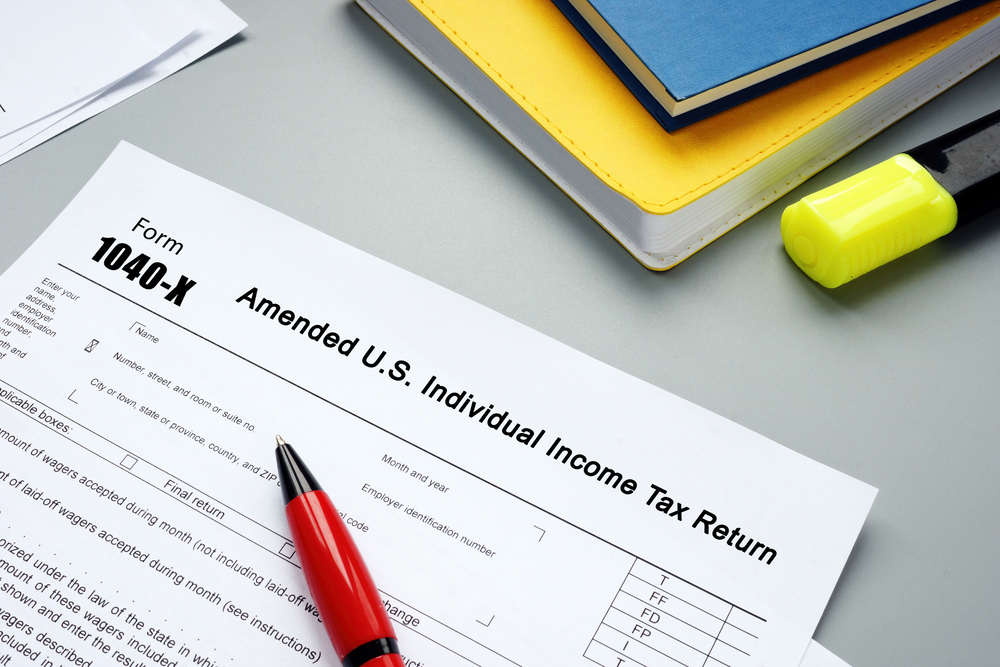What You Need to Know about Amending a Filed Tax Return
 Filing a tax return is a responsibility everyone has to tackle every year, and accuracy is key. However, mistakes happen. Whether you've discovered an overlooked deduction, reported incorrect income, or realized that your filing status was wrong, you have the opportunity to correct the error through an amended tax return. The process of amending a tax return can be complex, and understanding the details is crucial to ensuring the best outcome. Keep reading to learn everything you need to know about amending a filed tax return, from when you should amend to how the process works and what to expect.
Filing a tax return is a responsibility everyone has to tackle every year, and accuracy is key. However, mistakes happen. Whether you've discovered an overlooked deduction, reported incorrect income, or realized that your filing status was wrong, you have the opportunity to correct the error through an amended tax return. The process of amending a tax return can be complex, and understanding the details is crucial to ensuring the best outcome. Keep reading to learn everything you need to know about amending a filed tax return, from when you should amend to how the process works and what to expect.
When Should You Amend a Tax Return?
Amending a tax return is necessary when there are significant changes that affect the accuracy of your originally filed return. Some common reasons to file an amended return include:
- Reporting Errors: If you incorrectly reported your income, deductions, credits, or other financial details, an amended return will allow you to correct the figures.
- Omitted Income: If you left out any form of taxable income, such as a W-2 or 1099, amending your return ensures you're accurately reporting all sources of income.
- Filing Status: Mistakes in selecting your filing status, such as filing as single when you should have filed as married, can significantly affect your tax liability and should be corrected.
- Claiming New Deductions or Credits: If you've discovered a tax deduction or credit that you were eligible for but failed to claim on your original return, you can amend your return to take advantage of these benefits.
- Correcting Dependents: Mistakenly listing dependents or failing to include dependents can impact your eligibility for various tax credits, and amending your return can correct these errors.
It's important to note that you should not amend your return for minor math errors or missing forms if you received communication from the IRS. In many cases, the IRS will automatically correct mathematical errors and will notify you if additional documentation is needed.
How to File an Amended Tax Return
Filing an amended tax return is a straightforward process but must be handled with care. The form you will need to file is Form 1040-X, "Amended U.S. Individual Income Tax Return." This form allows you to make corrections to the previously filed tax return and provides space to explain why you're making the amendment.
After you’ve obtained Form 1040-X, it’s time to gather supporting documents. Ensure you have all the necessary documents related to the change you’re making. This may include corrected W-2s, 1099s, updated deduction or credit documentation, or any other relevant financial statements.
Carefully complete the form, detailing the specific items you are amending. The form has three columns:
- Column A is for the amounts from your original return or adjusted return.
- Column B is for the net change (increase or decrease).
- Column C is for the correct amount after adjustments.
Attach any additional schedules or forms that have been changed due to the amendment, and provide a clear explanation in the designated area on Form 1040-X. Now, you’re ready to re-file. You can file your amended return electronically if the original return was filed electronically. Otherwise, you may need to file a paper version by mail, depending on your situation.
It typically takes the IRS about 16 weeks to process an amended return. During this time, you can track the status of your return using the “Where’s My Amended Return?” tool on the IRS website.
Deadlines and Timeframes for Filing an Amended Return
It's critical to be aware of the time limitations for filing an amended tax return. Generally, you have three years from the date you filed your original return or two years from the date you paid the tax owed, whichever is later. If you miss this deadline, you may lose the ability to claim a refund for any overpayments or deductions related to the amendment.
However, there are exceptions to these deadlines, such as in cases involving bad debts, net operating losses, or when a refund is due because of a mistake involving foreign tax credits or exclusions.
What Happens after You File an Amended Return?
Once your amended return is filed, the IRS will review the information provided. If the IRS determines that you owe additional taxes, you will receive a bill, and penalties and interest may apply if the payment is late. Conversely, if your amendment results in a refund, the IRS will issue the refund, along with any applicable interest.
Keep in mind that the IRS may choose to audit your amended return. This is why it's essential to ensure the information provided is accurate and that you have supporting documentation for all claims made on the amended return.
Amending a tax return is a valuable tool for correcting errors and ensuring that your tax filing is accurate. However, it requires careful attention to detail, adherence to deadlines, and proper documentation. If you are considering amending a return, we encourage you to contact Demian & Company, CPAs, to guide you through the process. One of our experienced tax experts can ensure that the amendment is done correctly, help you navigate any potential challenges, and provide peace of mind. If you need assistance with filing an amended return, contact our office today for expert guidance and support.